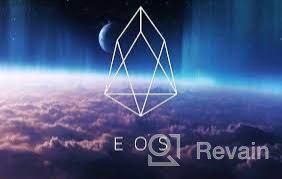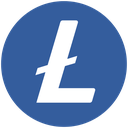
Review on EOS by Kenan Chalabi

My review on a crypto project named EOS
What is EOS?
EOS is a blockchain-based decentralized system infrastructure that supports the development, hosting, and running of decentralized applications (dApps) on a commercial scale on its platform. There is no formal and comprehensive form of EOS, and the creators have decided not to formally define it themselves.
Understanding EOS
EOS supports all necessary basic functions, enabling businesses and individuals to build blockchain-based applications in a similar way to web-based applications. EOS provides secure access and authentication, licensing, data custody, usage management, and communication between dApps and the Internet.
EOS also supports the Web interface development kit, making it a comprehensive product for seamless application development. Basically, it works like Google’s Play Store and Apple’s App Store.
EOS.IO and EOS token basic knowledge
EOS ecosystem is composed of two key elements: EOS.IO and EOS token.
EOS.IO is similar to a computer operating system: it manages and controls the EOS blockchain network. EOS.IO uses the blockchain architecture for the vertical and horizontal expansion of dApps. EOS token is the cryptocurrency of the EOS network.
Developers only need to own EOS coins instead of spending them to use network resources and build and run dApps. Token holders who are not running any applications can also allocate or rent their bandwidth to other participants who may need it.
is currently owned by the Block.one organization, and EOS was initiated by Dan Larimer, who is also the founder and creator of mature platforms such as Bitshares and Steem.
How is EOS different from the blockchain system?
Although there are already many blockchain-based networks, such as Ethereum, which can promote decentralized applications, EOS focuses on the key points of the blockchain and tries to solve the speed, scalability and flexibility issues that often become bottlenecks .
As the scale of the dApps ecosystem is increasing day by day on certain blockchain networks, the availability of resources on the network is usually limited. They include issues such as network restrictions due to a large number of fake transactions and similar requests, spam applications, slow execution speeds, and limited availability of computing power on the network.
EOS.IO tries to solve these problems by providing more scalability, flexibility and availability through its unique mechanism.
EOS.IO Features
EOS.IO claims to be able to support thousands of commercial-scale dApps by using parallel execution methods and network asynchronous communication without encountering performance bottlenecks. The independent modules involved in the work of dApp further improve the efficiency. For example, the authentication process is done separately from the execution process.
EOS.IO provides flexibility for dApp development and maintenance through various functions. Its ownership structure promotes free use by users. Transaction fees are eliminated because developers can use resources proportionally instead of the standard pay-per-transaction model. This also makes it easier for application developers to predict hosting costs and monetization strategies.
EOS.IO uses the concept of entrusted proof-of-stake and role-based permissions to achieve the flexibility of instant high-level decision-making; for example, through the majority agreement between designated stakeholders, to revoke, freeze, and repair damaged applications.
EOS has key usability features: Web interface development kit, self-describing interface, self-describing database model, and declarative permission scheme. All of these make it easy for developers to create and maintain applications.
Since block producers obviously want higher rewards, this feature can be easily abused. To solve this problem, a mechanism prevents producers from rewarding tokens so that the total annual increase in token supply does not exceed 5%. Token holders who vote on this matter have the right to vote to exclude block producers demanding more inflation.
This mechanism is complementary to EOS storage, because all token holders pay for file storage fees on the EOS network through a part of annual inflation. As long as they store files on the network, their EOS tokens will be held and will depreciate with the rate of inflation. The more storage
requires, the more blocks the block creator needs, and they can demand more value for their work through higher wage inflation, which is recognized by token holders. If storage demand decreases, inflation will decrease, thereby reducing the value loss of EOS tokens held.


- it has a big supply
- it is accessable
- no cons












